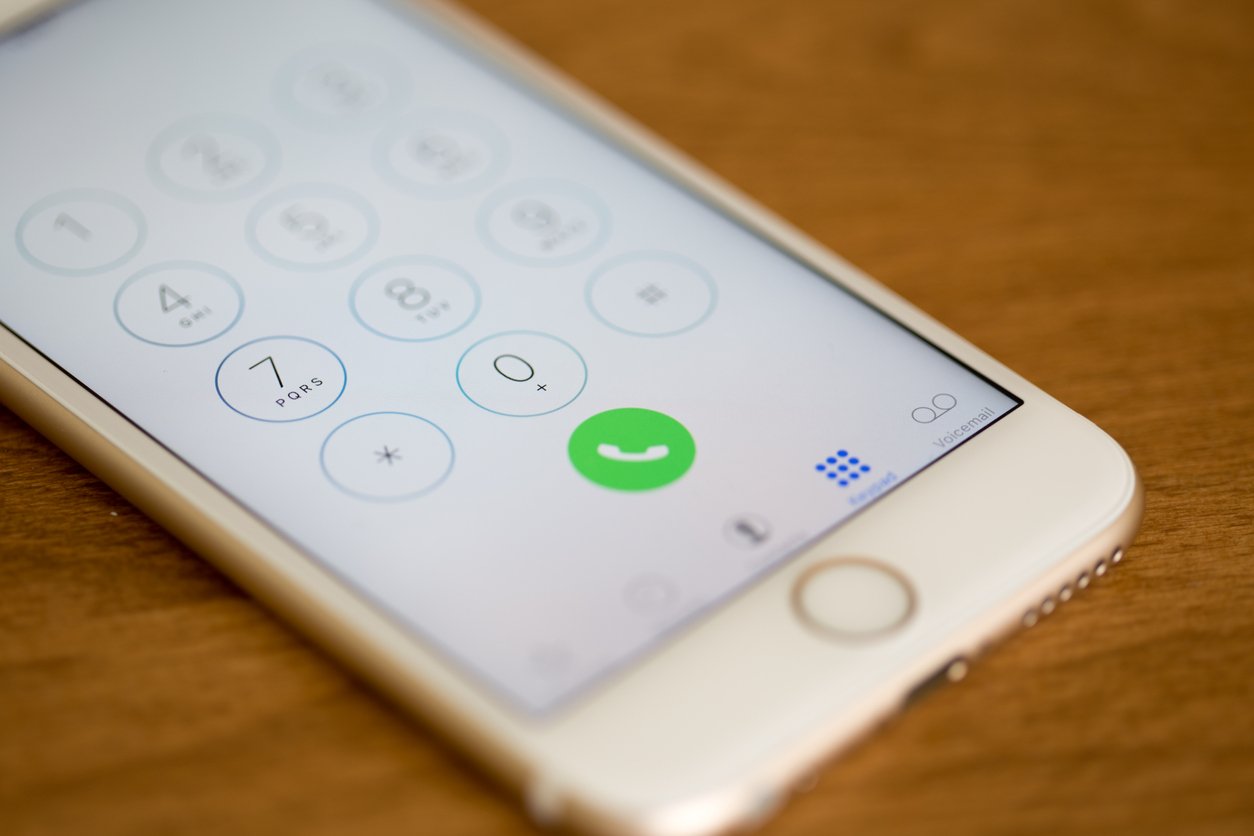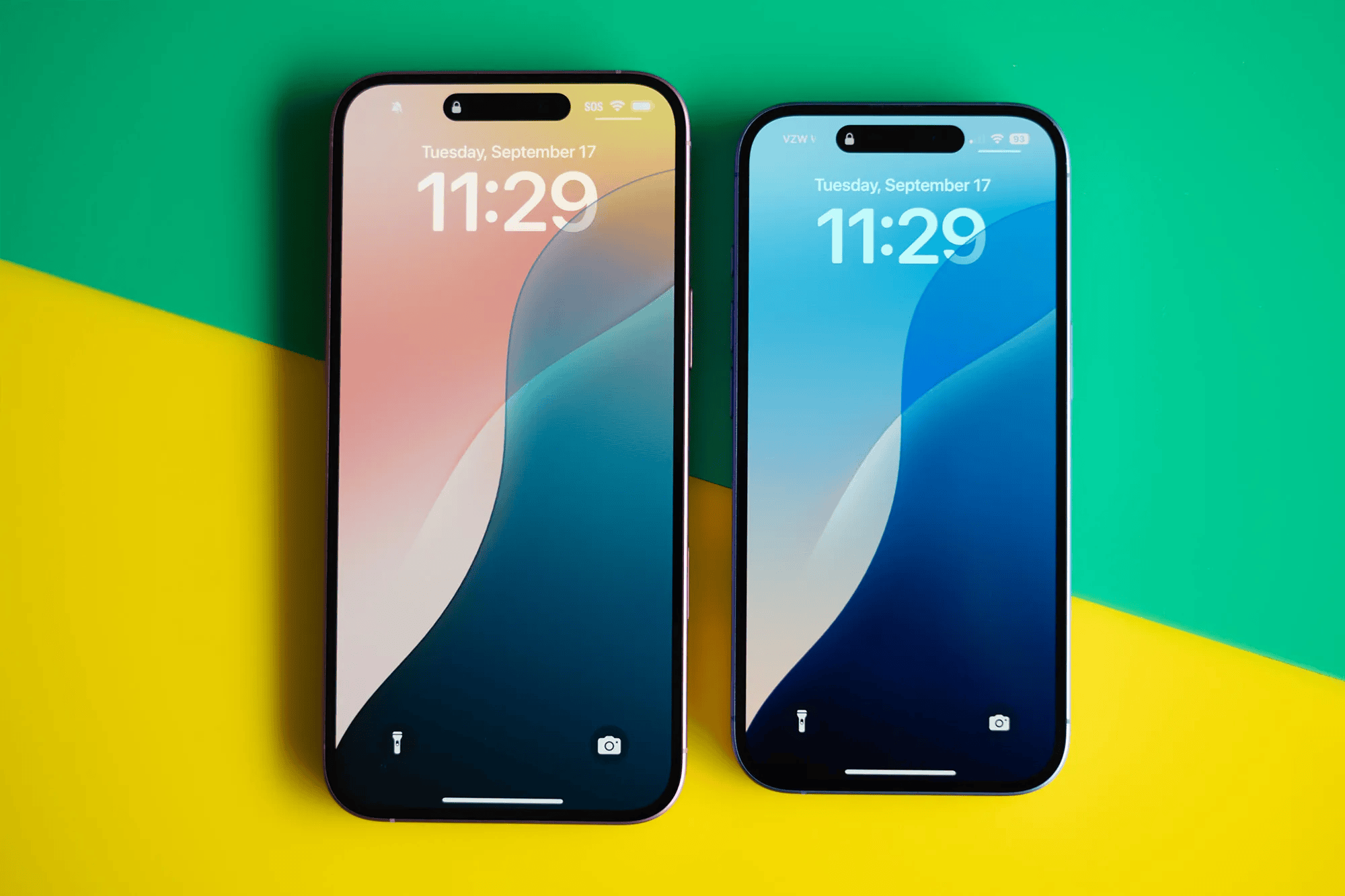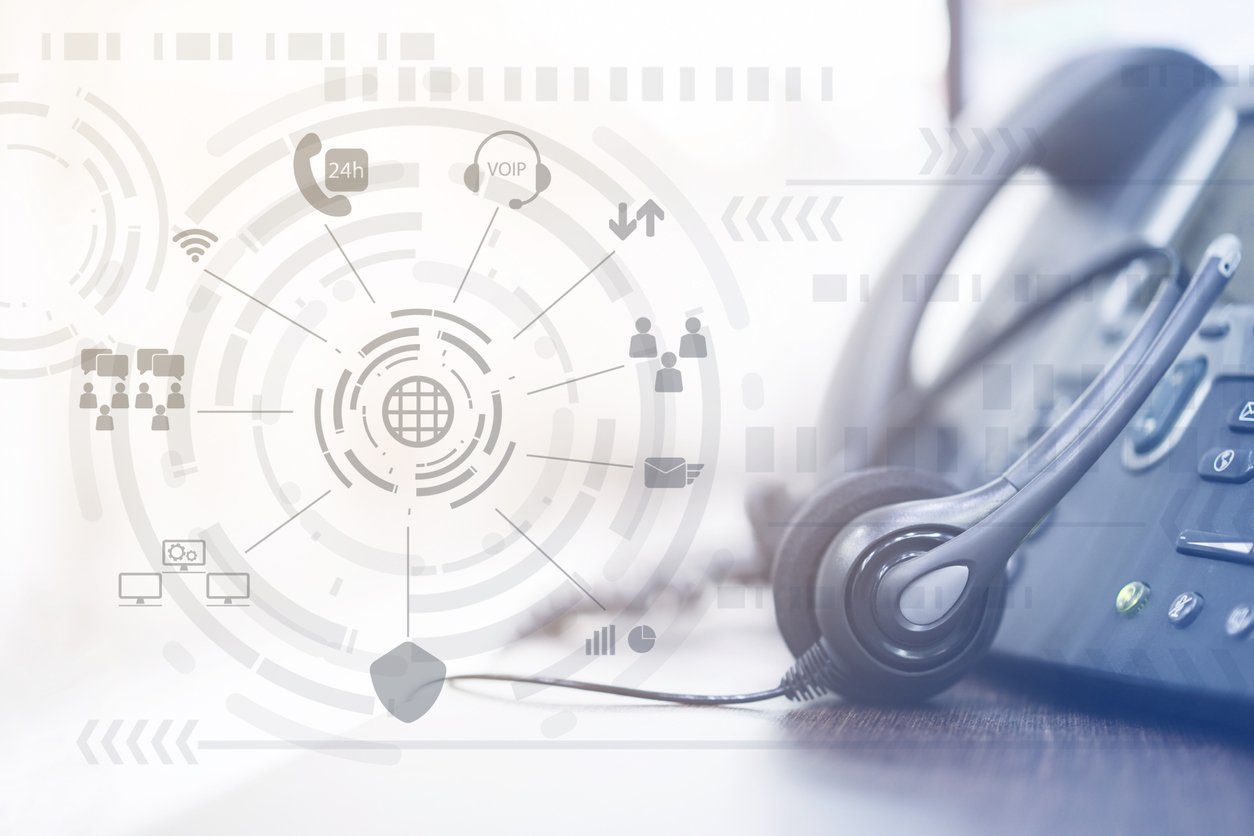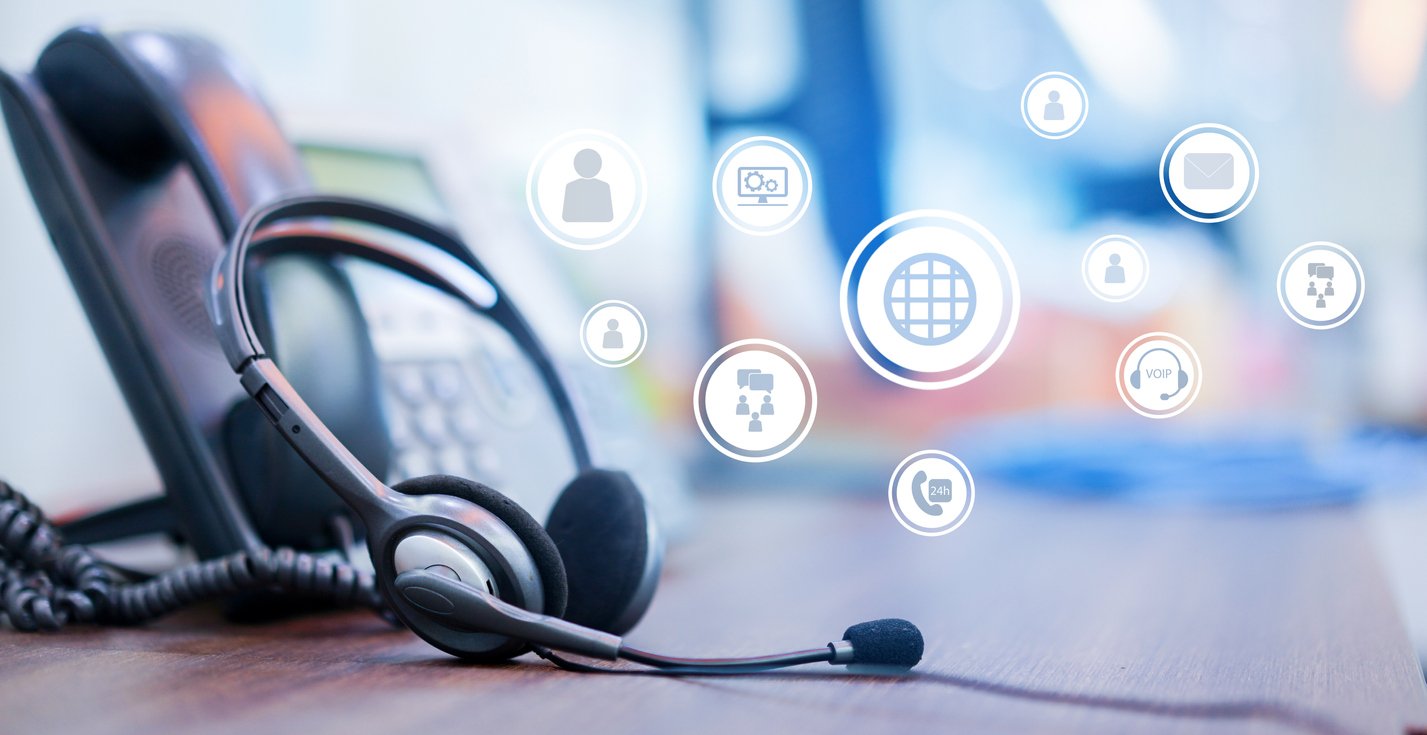
Ultimate Softphone Guide: SIP vs VoIP vs HardPhones
 Updated on
Updated on
 By Rob Marquez
By Rob Marquez
Rob Marquez
Originally from Southern California, Rob moved to Denver over 4 years ago to join the Ringy team as a Mobile Engineer. Rob received his BS and MS in C...
learn more
Rob Marquez
Originally from Southern California, Rob moved to Denver over 4 years ago to join the Ringy team as a Mobile Engineer. Rob received his BS and MS in C...
Table of Contents
Table of Contents
I remember starting my first office job and being introduced to a desk phone.
Now, I consider myself a pretty tech-savvy person, but, I mean, it had a cord. I hadn't seen a phone with a cord since I was a kid, and at that moment I was sure I was transported back to the 90s.

Ok, I'll have to admit it wasn't that bad. It let me do the basic things that you would expect: transfer calls to other departments, see who was calling, and put people on hold. But I knew there had to be a better way forward.
Since then, only two of the other jobs I've had actually gave me a desk phone. In both cases, it sat in the corner of my desk collecting dust while I used other communication tools like Slack and email. But if you use phones a lot and don't want to age so quickly that you turn into dust, there's a better solution: softphone, which is phone software that lets you make calls over the internet. Yay!
Thankfully, more companies are embracing softphones for a bunch of reasons, including that you need less hardware (unless you are really attached to that desk phone) and it's typically easy for your softphone provider to customize the software to meet your needs. There are reasons two that we'll get into the nitty-gritty of in this guide.
If you haven't adopted a softphone yet and experienced the awesomeness of a seamless phone call transition from your laptop to smartphone, you're missing out.
But as soon as you google softphone, suddenly you'll see terms like hardphone, SIP softphone, VoIP softphone, and others that might be confusing.
This guide is meant to peel back the layers and show you what softphones are all about, and how they can not only help your business become future-proof, but increase your sales, customer service standards, and efficiency throughout all departments.
What is a Softphone?

A Softphone is a piece of software that allows you to make phone calls over the internet using an internet-connected device like a computer or Apple or Android smartphone.
The software part of a softphone is just an app that you download to your computer or smartphone that provides an interface similar to a regular desk phone (or hardphone), complete with things like a dial pad, contact list, and menu options. Downloading a softphone app is as easy as going to the Google Play or Apple Store and typing in the name of the softphone app that coincides with what your company purchased.
What is a SIP Softphone and VoIP Softphone?

At a high level, VoIP and SIP (Session Initiation Protocol) are types of internet telephony protocol, which basically just means telephoning over the internet. VoIP is a more straightforward technology that can handle voice calls on its own just fine, and SIP is the software that takes VoIP to the next level by adding features and automation. While VoIP can work just fine on its own, SIP needs VoIP to work. In other words, VoIP is the engine and SIP is what goes on top - it could be a car, truck, motorcycle, or whatever you need. Get the idea?
Most businesses these days need more than just voice calls. They want video, text, voice, and a way to automate and track communications with their customers and salespeople. That's where SIP comes in.
While any communications that take place over the internet are done through VoIP technology, SIP is the communication protocol that manages that communication, whether it be text, voice, video, etc. In other words, SIP is a protocol (or system of rules) that works in tandem with VOIP to deliver the communications that you need over the internet to you.
Regardless of how you want to communicate with your customer, SIP is the brain that handles the whole process.
Hardphone vs. Softphone
Back in the day, offices relied on traditional desk phones that were tied to a landline system. These phones need to be connected to something called a PBX box, which is a physical system that needs to live somewhere in the office and connects all the phones to an internal switching system that handles all the individual phone lines throughout the company, kind of like an old-school switchboard. This system requires regular maintenance and typically needs an experienced IT professional to manage it and maintain it.

The next evolution for hardphones was VoIP (Voice over Internet Protocol), which basically meant that they started making desk phones with an ethernet connection so businesses could make calls over the internet, saving them big money on phone bills. Some of these VoIP systems eliminate the need for a PBX box, which means less maintenance and management as well.
In the beginning, VoIP was limited in what it could do, but over time software was developed to work with it to give it more functionality. These upgrades meant that businesses now have more options for how they handle calls, including video calls and text messaging.
While a hardphone is a physical piece of hardware and a softphone is a piece of software, that doesn't mean that they work independently of each other or that you have to choose one option over the other. In fact, hardphones can work in tandem with softphones, so you can choose to have a physical desk phone as well as phone software on your computer and smartphone for when you are on the go.
How Does a Softphone Work?
A softphone works by connecting the user and the device (a computer or smartphone) together to facilitate communication. It does this by using a few key pieces of technology: an interface, an engine for processing calls, and a set of codecs.
|
Softphone Components |
Description |
|
Softphone interface |
What you see when you open the app on your computer or smartphone. The dial pad, contact list, menus, and any interactive buttons (ones that you click or touch) are all components of the softphone's interface. |
|
A set of codecs |
Takes data and encodes or decodes it and controls data transfer, so any voice, video, or text that comes through is handled by the codecs and compressed or changed into the proper format for transmission. |
|
The engine for processing calls |
AKA API (Application Programming Interface). This technology is a set of directions that dictates how calls are placed and received. |
Of course, a softphone also has all the other standard phone features you'd expect, like:
- Voicemail
- Call forwarding
- Caller ID
- Conference calling
- Call analytics
In addition, softphone software can integrate into your existing CRM system, but if you don't have one or the one you have isn't up to snuff, you can always use our all-in-one CRM, VOIP, and automation software.
Key Features of a Softphone
Softphones are increasingly becoming essential communication tools for businesses, providing flexibility and efficiency. Below, we break down some of the most important features that make softphones stand out.
|
Feature |
Description |
|
Voice and Video Calling |
Supports both voice and video calls, providing versatility and device flexibility through VoIP softphone technology. |
|
Call Management Features |
Includes call forwarding, call transfer, conference calling, and voicemail integration for seamless call handling. |
|
Instant Messaging and Chat |
Built-in messaging for quick, internal communication among team members, allowing unified access to calls and chats in one interface. |
|
Presence and Availability Status |
Displays user availability (e.g., available, busy, in a meeting), improving workflow coordination and minimizing interruptions. |
|
CRM and Business Tool Integration |
Integrates with CRM systems and other business tools, helping track customer interactions and streamline workflows for efficient communication and collaboration. |
|
Call Recording and Analytics |
Provides call recording for quality assurance and compliance, along with detailed reports on call metrics such as volume, duration, and performance analysis. |
1. Voice and Video Calling
- Voice and Video Capabilities: Softphones support both voice and video calling, making them a versatile option for businesses that need more than just traditional phone calls.
- Clear Communication: Whether it's a one-on-one call or a group meeting, softphones ensure smooth and clear communication through VoIP softphone technology.
- Device Flexibility: Whether on a desktop softphone app or a mobile SIP softphone, users can connect from various devices, enhancing accessibility.
2. Call Management Features
- Call Forwarding and Transfer: With softphones, users can forward calls to other devices or team members, ensuring no missed communications.
- Conference Calling: Softphone software allows for easy setup of conference calls, enabling collaboration without the need for additional equipment.
- Voicemail Integration: Access voicemails through the same softphone app, streamlining call management.
3. Instant Messaging and Chat Integration
- Quick Internal Communication: Softphones often include built-in instant messaging, enabling faster communication between team members without needing separate platforms.
- Unified Interface: This feature helps streamline communication by allowing users to make calls and send messages from the same VoIP softphone app.
4. Presence and Availability Status
- Display Availability: Softphones allow users to show their current status, such as available, busy, or in a meeting.
- Team Coordination: With this feature, coworkers can easily check availability before initiating a call or chat, improving workflow and minimizing interruptions.
5. Integration with CRM and Business Tools
- Seamless CRM Integration: Softphones often integrate with CRM systems like Salesforce, enabling teams to track customer interactions effortlessly.
- Enhanced Workflow: Integration with other business tools like ticketing systems or project management platforms helps teams maintain efficient communication and collaboration.
6. Call Recording and Analytics
- Call Recording: Softphones offer the option to record calls for quality assurance, training purposes, or compliance with industry regulations.
- Detailed Analytics: VoIP softphones provide in-depth call reports, tracking metrics such as call volume, duration, and performance, helping businesses optimize their communication strategies.
Common Challenges Sales Team Face Related to Phone Calls (inbound/outbound sales calls)
Most inbound and outbound sales teams face similar challenges across the board with sales calls:
- Low response rate from prospects
- Long sales cycles
- unqualified leads
- Knowing when to call, text, or email
In fact, we wrote a whole blog post on inside sales best practices in case you want to read more.
Low Response Rate From Prospects
Even if you're using all the technology in the world to find the perfect prospects, low response rate is still a real issue that sales reps face every day. Techniques like using local caller ID, leaving a voicemail, and using a dialing system are some of the recommended ways to increase contact rates from prospects.
Long Sales Cycles
Nobody wants a sale to take weeks or months to close, but that's the reality for a lot of sales reps. In some cases, it could be worth the time and effort, but what if there was a way to shorten that process without sacrificing quality?
Here are a few ways that you can speed up the sales cycle by tweaking your approach to contacting leads:
- Gather leads from your best-performing channels, and keep track of how long it took to close each lead. Also, prioritize contacting your best leads first.
- Make sure you have a robust sales process in place and measure how long it takes to go from A to B in closing a sale from a lead. This allows you to improve your process over time.
- Contact leads in a timely manner, and use automation software to automate responses when it makes sense.
Unqualified Leads

It's so tempting to send each and every possible lead to the sales team to contact, with the hopes that even if they aren't a good lead, maybe some miracle will happen and they'll buy anyway.
And sure, you can do that, but you'll sacrifice the time and patience of your salespeople, and most likely close fewer sales. Wasting your time on unqualified leads is not a great way to do business.
You'll want to figure out what makes a qualified lead for your business by analyzing the data that you have from the customers who closed and using that information to build out what a qualified lead looks like.
Knowing When to Call, Text, or Email
Look, we're all busy people, and nobody likes to be inundated with any form of communication when they don't want it. The trick is to use the right form of communication for the situation.
Here's an example.
I recently signed up for one of those meal box services, where they send you several ready-to-cook meals each week. While it wasn't a terrible service, it was a bit financially draining and with a few recipes on hand from the meals they sent, I felt like I could replicate them just fine on my own. Ultimately, I decided to cancel after a couple of weeks.
Once I cancelled, I received an email asking why. I ignored it.
But then a few days later, something interesting happened: I got a call from a sales rep. He asked me what my challenges were with the service, and when I said financial reasons, he offered me a special deal that got me back on board, just like that.
Knowing when and how to contact customers can help reps feel more confident and connect with their customers better.
While these challenges don't have a magic bullet solution that will work every time, with the right technology, reps may find themselves closing deals quicker and easier than expected. Softphones are a powerful technology that can help with that. Let's find out how.
How Can Softphones Improve Sales Departments' Efficiency and Capabilities?
Softphones can increase the efficiency of sales departments by providing them with more tools that they can use to manage and connect with customers. Efficiency is the keyword here, as finding the right ways to keep in communication with customers in a fully connected world is a must for most professionals, especially salespeople.
1. Increased Mobility and Flexibility
Softphones allow sales teams to make and receive calls from any device, whether they're in the office, working remotely, or traveling. This increased mobility ensures that sales reps can stay connected with clients and prospects at all times, boosting responsiveness.
2. Improved Call Tracking and Data Management
Softphones often integrate with CRM systems, enabling automatic call logging, tracking, and data storage. This ensures that all client interactions are documented, providing valuable insights for follow-ups and performance reviews.
3. Enhanced Communication with Prospects
With voice, video, and chat functionalities, softphones allow for more dynamic communication with prospects. Sales teams can engage more effectively, building stronger relationships through personalized and timely interactions.
4. Streamlined Workflow with Automation
Softphones can automate repetitive tasks such as call scheduling, follow-ups, and reminders. This reduces the administrative burden on sales teams, allowing them to focus more on closing deals and nurturing leads.
5. Enhanced Collaboration and Team Coordination
Softphones support internal communication features like instant messaging and presence status, making it easier for sales teams to collaborate. Team members can check availability and quickly connect, leading to more cohesive teamwork.
6. Call Recording for Training and Quality Assurance
The ability to record calls provides sales managers with valuable training materials. Recorded calls can be reviewed to identify areas for improvement and ensure compliance with company standards, ultimately improving call quality.
7. Analytics and Performance Tracking
Softphones provide real-time analytics on call volume, duration, and success rates. These insights help sales teams track their performance, identify bottlenecks, and adjust strategies to increase productivity and conversions.
8. Cost Efficiency
Compared to traditional phone systems, softphones are often more cost-effective as they use VoIP technology, eliminating the need for expensive hardware and reducing long-distance call costs.
9. Better Lead Management and Follow-Up
By integrating with CRM systems and offering features like call tracking and reminders, softphones help sales teams manage leads more effectively. Timely follow-ups and personalized interactions improve lead nurturing and conversion rates.
Future Trends in Softphone Technology
As technology continues to evolve, softphone apps and software are becoming more advanced, paving the way for improved communication systems. Here are some key trends shaping the future of softphone technology.
AI and Machine Learning Integration
As AI and machine learning continue to advance, we can expect to see increasingly sophisticated softphones. These AI-powered softphones will offer features like:
- Predictive Call Routing: AI algorithms can analyze call data and route calls to the most appropriate agent based on factors such as caller history, preferences, and available agents.
- Speech Recognition: Softphones will become even better at understanding and responding to natural language, making interactions more efficient and intuitive.
- Sentiment Analysis: AI can analyze the tone and emotion of conversations, helping sales teams tailor their responses to improve customer satisfaction.
Unified Communication Platforms
The trend toward integrating softphones into comprehensive Unified Communications as a Service (UCaaS) platforms is expected to continue. These platforms offer a suite of communication and collaboration tools, including voice, video, chat, and file sharing, all in a single, integrated solution. This will simplify communication for businesses and make it easier to manage their communication infrastructure.
Increased Adoption in Remote and Hybrid Work Environments
The rise of remote and hybrid work models is driving the adoption of softphones. As more businesses embrace flexible work arrangements, the need for reliable, location-independent communication tools will become even more critical. Softphones offer a convenient and cost-effective solution for businesses of all sizes, enabling employees to stay connected and productive regardless of their location.
Practicality

A hardphone is great if you don't mind being tied to your desk all day long, but a softphone is way more practical and flexible. Seamless integration between devices, for instance, means that if you need to leave the office for any reason, you can keep yourself connected through your laptop or smartphone.
In addition, if you need to pause communications entirely for a period of time or limit yourself to text and email, softphones can control all of that with the touch of a button.
Customer Retention
Softphone software can integrate into your existing CRM, or if you don't have one yet, Ringy offers a full solution with all-in-one CRM + VOIP + automation software.
Having all your customer information and history at your fingertips not only gives you a better understanding of them and how their experience with your company has been so far, but it also allows you to identify opportunities and gaps where you could do things like offering them a service that you know would work great for them, or keep on top of pain points or issues that you can help solve.
More Options for Lead Nurturing
Lead nurturing is about developing relationships with customers, and softphone is just another tool in your arsenal to help you do just that.
Let's go back to my meal subscription box experience. I firmly believe that because the sales rep could see my full history as a customer, he knew that it was time to give me a call. I can't say for sure if the meal subscription box service uses softphone software, but judging by the swiftness in contacting me and the knowledge the sales rep had about me and my business with them beforehand, it seems pretty likely that they do.
Long story short, softphone helps you nurture new and existing leads and customers by providing a birds' eye view of who they are and what they need, thus giving sales reps a leg up in closing those leads.
Shorter Sales Cycles
When you don't have to run around to multiple sources and can view everyone about a customer in one place, chances are the overall sales cycle is going to be shorter than it would be otherwise.
Integrations with Existing Software like a CRM
This is perhaps the most important feature of a softphone because without being able to integrate with all the existing information and data you have about a customer, you're adding time and money to the sales process. Like we said before, having all the information you need right in front of you gives salespeople the confidence boost and knowledge they need to close a sale with ease.
Key Takeaways

- A softphone is a software-based phone application that you use on your computer or smartphone, either by itself or in addition to a physical desk phone. It allows you to make calls over the internet using VoIP.
- A softphone works by connecting the user and a computer or smartphone for communication. It does this by using an interface, an engine for processing calls, and a set of codecs.
- Softphones reduce the challenges faced by inbound and outbound sales teams using phone calls to connect with customers and leads by offering a bird's eye view of the customer's information and current status with the business, and the ability to determine the best way to contact them.
- Many large businesses have seen great success by implementing softphone technology into their normal company operations, from increased sales, customer service, and more streamlined and consistent processes.
In short, investing in softphone software, whether you choose to go for a complete desk phone-free solution or keep your VoIP desk phones, will help you scale your business and be more efficient with all your teams.
If you're ready to get Softphone software working with your existing systems, or get a complete CRM, VOIP, and Automation solution, check Ringy out, and we'll get you started.

Skyrocket your sales with the CRM that does it all.
Calling? Check. SMS? Check. Automation and AI? Check. Effortlessly keep in touch with your customers and boost your revenue without limits.

Take your sales to new heights with Ringy.
Sales in a slump? Ringy gives you the tools and flexibility you need to capture leads, engage with them, and turn them into customers.
Subscribe to Our Blog
Enter your email to get the latest updates sent straight to your inbox!
Categories
Related Articles














.jpg)




.jpg)
.jpg)











































